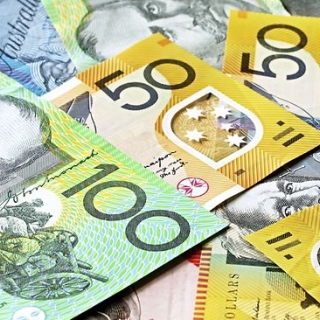


The Australian dollar (AUD) continued its rally on Thursday (10/4), climbing towards the 0.6240 zone during the American session. The currency pair built on its recent strength as the US Dollar Index (DXY) slumped further towards multi-month lows near the 101 area. The move came after the market digested the White House's confirmation of a 145% tariff on Chinese goods, combined with the Federal Reserve's (Fed) cautious tone.
Despite the greenback's decline, the technical backdrop for AUD/USD remains tilted to the downside, with several key indicators continuing to flash bearish signals, even as the pair attempts to recover lost ground.
Daily market movers: Aussie up as US dollar slides as Fed flags inflation, trade war risks
The US dollar (USD) continued its decline on Thursday, pressured by escalating trade tensions and weaker inflation data. DXY eased near the 101.00 level as investors digested the latest tariff developments and cautious Fed rhetoric.
President Trump's 145% tariffs on Chinese imports remain in place, although there was a temporary pause on some measures. Fed officials, including Goolsbee, Logan, and Schmid, warned that price pressures caused by the tariffs could hurt consumer sentiment, dampen job growth, and complicate monetary policy decisions.
US initial jobless claims rose slightly, reinforcing concerns about a cooling labor market. Meanwhile, the March CPI report revealed a sharp slowdown in both core and headline inflation, easing to multi-year lows.
Equity markets gave back some of Wednesday's gains, with the Dow falling below 40,000 as sentiment turned more cautious. Meanwhile, Gold surged to an all-time high and WTI crude reversed midweek gains amid demand concerns. The Australian dollar strengthened against a weaker US dollar, even as the macro outlook for Australia remains fragile due to its reliance on Chinese demand, which has been dampened by retaliatory tariffs. (Newsmaker23)
Source: FXstreet
The Australian dollar strengthened against the US dollar on Wednesday, recouping the previous session's losses. This boost came from comments by RBA Assistant Governor Sarah Hunter: recent data appear...
The Australian dollar (AUD) strengthened to around 0.6530 against the US dollar (USD) in the Asian session on Monday, after falling more than 1% in the previous trading session. This strengthening occ...
The Australian dollar strengthened to around $0.657 on Friday (October 10), rebounding from a nearly two-week low. This gain came after RBA Governor Michele Bullock struck a cautious tone: services in...
Wednesday, October 8, 2025 - The Australian dollar weakened to around US$0.656, extending its decline as the US dollar continued to strengthen. Safe-haven demand for the greenback increased as the US ...
The Australian dollar (AUD) strengthened against the US dollar (USD) this morning after the latest inflation data from the TD Securities–Melbourne Institute (TD-MI) showed a higher-than-expected surge...
US stocks rose on Friday (October 17th) as investors reacted positively to President Trump's remarks alleviating concerns about further trade escalation with China, while regional bank stocks rebounded after Thursday's sharp declines. The S&P...
Oil prices posted a slight increase on Friday (October 17th), but were close to a weekly loss of nearly 3% after the International Energy Agency (IEA) forecast a widening oversupply, and U.S. President Donald Trump and Russian President Vladimir...
Gold prices (XAU/USD) fell 2% after hitting a record high of $4,379 on Friday (October 17th), falling below $4,250, triggered by comments by US President Donald Trump that triple-digit tariffs against China were unsustainable. At the time of...
 Federal Reserve Governor Christopher Waller said on Thursday he's on board with another interest rate cut at the U.S. central bank's policy meeting...
Federal Reserve Governor Christopher Waller said on Thursday he's on board with another interest rate cut at the U.S. central bank's policy meeting...

 US stocks closed higher on Wednesday, despite ongoing US-China trade tensions and the ongoing government shutdown. The S&P 500 rose 0.4%,...
US stocks closed higher on Wednesday, despite ongoing US-China trade tensions and the ongoing government shutdown. The S&P 500 rose 0.4%,...
 Australia's unemployment rate jumped to 4.5% in September, its highest level since 2021. This figure was worse than expected and indicates that the...
Australia's unemployment rate jumped to 4.5% in September, its highest level since 2021. This figure was worse than expected and indicates that the...